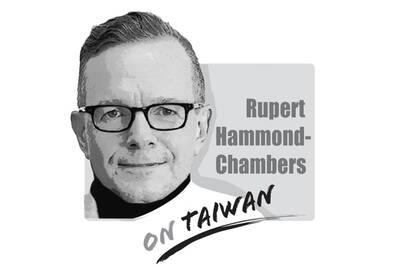Chinese Nationalist Party (KMT) politicians and the Chinese government have been stressing the importance of the so-called “1992 consensus,” but this might just be a sign that the KMT has no good cards to play, as a recent opinion poll showed that it did not appear to be a major concern for most voters.
Democratic Progressive Party (DPP) Chairperson and presidential candidate Tsai Ing-wen (蔡英文) said last month that maintaining the “status quo” would be her China policy, while at the same time declining to recognize the “1992 consensus,” which is an alleged understanding between the KMT and the Chinese government that both sides of the Taiwan Strait acknowledge that there is “one China,” with each side having its own interpretation of what “China” means.
Meanwhile, several KMT politicians, including Chairman Eric Chu (朱立倫), former Taipei mayor Hau Lung-bin (郝龍斌), Presidential Office spokesperson Charles Chen (陳以信), Mainland Affairs Council Minister Andrew Hsia (夏立言) and President Ma Ying-jeou (馬英九), have stressed the importance of the “1992 consensus.” Moreover, China’s Taiwan Affairs Office has echoed KMT leaders by reiterating that the “1992 consensus” is the key to cross-strait exchanges.
In response to the criticism, Tsai said that they do not understand what Taiwanese really care about, and public sentiment seems to back her up.
On Wednesday, at almost the same time as Ma was criticizing Tsai’s cross-strait agenda, the Taiwan Brain Trust released a series of opinion poll results, showing that 74.1 percent of people support Tsai’s China policy, 51.2 percent are confident that the DPP would be able to maintain peace across the Taiwan Strait, 68 percent believe that Taiwan is a sovereign and independent state and 52.2 percent — 59.3 percent of whom are working in China or have relatives working in China — said that the DPP should not accept the “1992 consensus.”
The poll also indicated that most people believe domestic affairs, such as economic development and social justice, are the most important issues for next year’s presidential election, while cross-strait relations ranked only as the fourth-most important issue.
In addition, on Thursday, poll results released by Taiwan Indicators Survey Research showed that 56.9 percent of people regard cross-strait relations as “state-to-state” relations. The poll results seem to support Tsai’s policies regarding relations with China.
Ideas about developing cross-strait relations in the minds of KMT leaders, especially Ma, differ from the public’s. For the KMT, cross-strait relations are a nationalistic issue: It is about the “Chinese on both sides of the Taiwan Strait” belonging to one big family, and that they must eventually be unified. However, most Taiwanese voters are concerned about cross-strait relations because they do not want a war with China, and they believe that peaceful and stable cross-strait relations might help bring some economic benefits.
Ma was elected president seven years ago after promising that he would bring about economic prosperity by developing cross-strait relations. He has obviously failed to fulfill his promise. Voters gave the KMT a chance, but the KMT failed to keep its word, and now many people are turning to the DPP.
No matter how Tsai tries to explain the DPP’s position, voters know that the party is more pro-independence, while the KMT is more in favor of unification. The KMT still does not know what the problem is, and tries to attract the public with its tired political ideology. If the KMT continues to campaign along these weary lines, it will surely get found out at next year’s legislative elections.
The gutting of Voice of America (VOA) and Radio Free Asia (RFA) by US President Donald Trump’s administration poses a serious threat to the global voice of freedom, particularly for those living under authoritarian regimes such as China. The US — hailed as the model of liberal democracy — has the moral responsibility to uphold the values it champions. In undermining these institutions, the US risks diminishing its “soft power,” a pivotal pillar of its global influence. VOA Tibetan and RFA Tibetan played an enormous role in promoting the strong image of the US in and outside Tibet. On VOA Tibetan,
Former minister of culture Lung Ying-tai (龍應台) has long wielded influence through the power of words. Her articles once served as a moral compass for a society in transition. However, as her April 1 guest article in the New York Times, “The Clock Is Ticking for Taiwan,” makes all too clear, even celebrated prose can mislead when romanticism clouds political judgement. Lung crafts a narrative that is less an analysis of Taiwan’s geopolitical reality than an exercise in wistful nostalgia. As political scientists and international relations academics, we believe it is crucial to correct the misconceptions embedded in her article,
Sung Chien-liang (宋建樑), the leader of the Chinese Nationalist Party’s (KMT) efforts to recall Democratic Progressive Party (DPP) Legislator Lee Kun-cheng (李坤城), caused a national outrage and drew diplomatic condemnation on Tuesday after he arrived at the New Taipei City District Prosecutors’ Office dressed in a Nazi uniform. Sung performed a Nazi salute and carried a copy of Adolf Hitler’s Mein Kampf as he arrived to be questioned over allegations of signature forgery in the recall petition. The KMT’s response to the incident has shown a striking lack of contrition and decency. Rather than apologizing and distancing itself from Sung’s actions,

US President Trump weighed into the state of America’s semiconductor manufacturing when he declared, “They [Taiwan] stole it from us. They took it from us, and I don’t blame them. I give them credit.” At a prior White House event President Trump hosted TSMC chairman C.C. Wei (魏哲家), head of the world’s largest and most advanced chip manufacturer, to announce a commitment to invest US$100 billion in America. The president then shifted his previously critical rhetoric on Taiwan and put off tariffs on its chips. Now we learn that the Trump Administration is conducting a “trade investigation” on semiconductors which